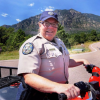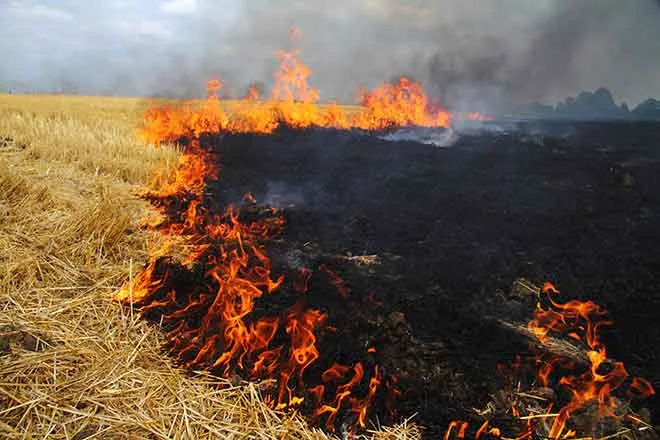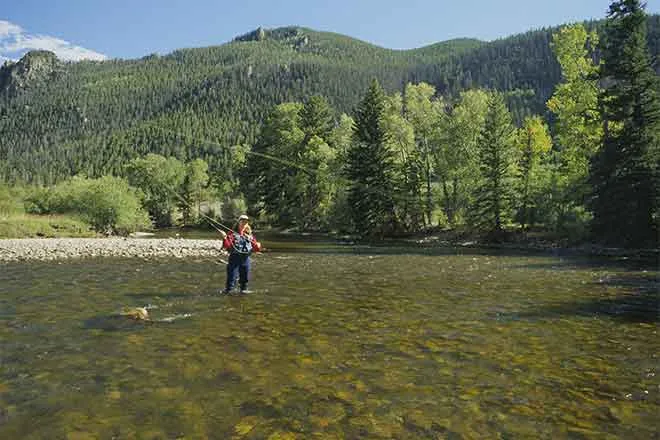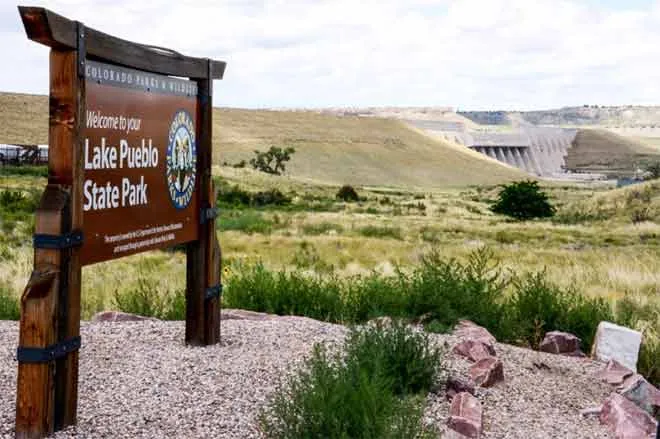
Ranger Station: Evidence of dinosaurs and other ancient history exposed in Colorado state parks
When I was in college, a million years ago, there were two classes I needed, and dreaded, to complete my biology degree: parasitology and geology.
I put off taking them as long as I could but eventually had to bite the proverbial bullet. I was right all along about parasitology. It really bugged me. (Sorry.) But geology was a pleasant surprise. It really rocked. (Sorry, again.)
Seriously, geology taught me there are windows into our past everywhere and, in some cases, right in front of a fossil like me.
And if you visit our Colorado State Parks, you’ll find windows to very cool geological features in front of you, too.
One of the world’s most rare, and most significant, geologic features can be seen, even touched, at Trinidad Lake State Park. It is commonly known as the K-T Boundary. (The “K” stood for a German work for the Cretaceous period on Earth and the “T” represented the Tertiary age. Now it’s known among scientists as the Cretaceous–Paleogene boundary.)
Doesn’t matter what you call it, the boundary is incredible. It’s a thin layer of prehistoric dust exposed on an easily accessed rock outcropping in the southern part of the park.
What’s so important about this layer of dust? Scientists believe the K-T boundary indicates when an asteroid hit Earth near the Yucatan peninsula in Mexico about 65 million years ago. (That’s 64 million years older than me, if you are counting.)
The impact sent waves of radioactive dust circling the planet, choking out sunlight and inhibiting photosynthesis, leading to the extinction of dinosaurs and most other life.
If you’re a fan of dinosaurs (and who isn’t?) then you know how cool it is to be able to actually touch the point in time when dinosaurs were wiped out.
And not only does Trinidad Lake have the K-T boundary, it has actual dinosaur tracks on the property indicating the area was home to quite a few of the prehistoric creatures. You can see a display on the dino footprints at the Visitor Center.
In fact, the whole thing got me thinking. Maybe we should rename Trinidad Lake State Park to something more appropriate, like Jurassic Park? Is that name taken?
Anyway, Lake Pueblo State Park has its own geologic claim to fame. It is one of the best places in North America to see the Graneros, Greenhorn, Carlile and Niobrara rock formations. These formations have many important features, like volcanic ash beds and fossils.
The rock layers in the Bridge Creek Limestone Member of the Carlile Shale are so complete that the park is internationally recognized as one of the best places in the world to see the boundary between the Cenomanian and Turonian ages of geologic history.
More than 200 scientific papers have been published about the rock formations and fossils in the park and it was chosen as a prestigious GSSP (Global Boundary Stratotype Section and Point). A golden spike and interpretive sign can be found in the Rock Canyon area of the park marking the GSSP site.
Want more dinosaur footprints? Make your own tracks to John Martin Reservoir State Park where you can find dinosaur prints dating back 97 million years. The tracks are usually submerged, but they can be seen during periods of low water. Tracks are actually as significant in the study of dinosaurs as bones and fossils. They can be used to map possible migration, home ranges and if they were solitary versus herds.
Geologic events essentially created what is now the Arkansas Headwater Recreation Area, a state park stretching from near Leadville through Buena Vista and Salida to Cañon City.
The events started 325 million years ago, which included uplifts that eroded away when the seas moved inland, a stress in the continental plate that pulled at both sides of the Sawatch uplift until the center broke loose and slid downward creating a trough that spanned from Leadville to New Mexico.
Volcanoes spewed lava and ash that formed mountains on the eastern side of an uplift, creating the Arkansas River. Glacier episodes scoured the rock and filled the valley with rocks and dirt, which affected the course of the river. The magma from the volcanoes that is below the surface fuels the hot springs which are well known in the area.
While we think about geology as that rocky window to the past, these events are still happening. The mountains still rise and erode, but at a rate that keeps the elevations constant.
Searching for the geological remnants such as gems, crystals, minerals, fossils or tracks is fun and educational. But please remember that removing any item from a state park is not only illegal, it ruins the chance of others having the same experience.

















